7 fun facts about glorious guinea pigs (and a freebie)
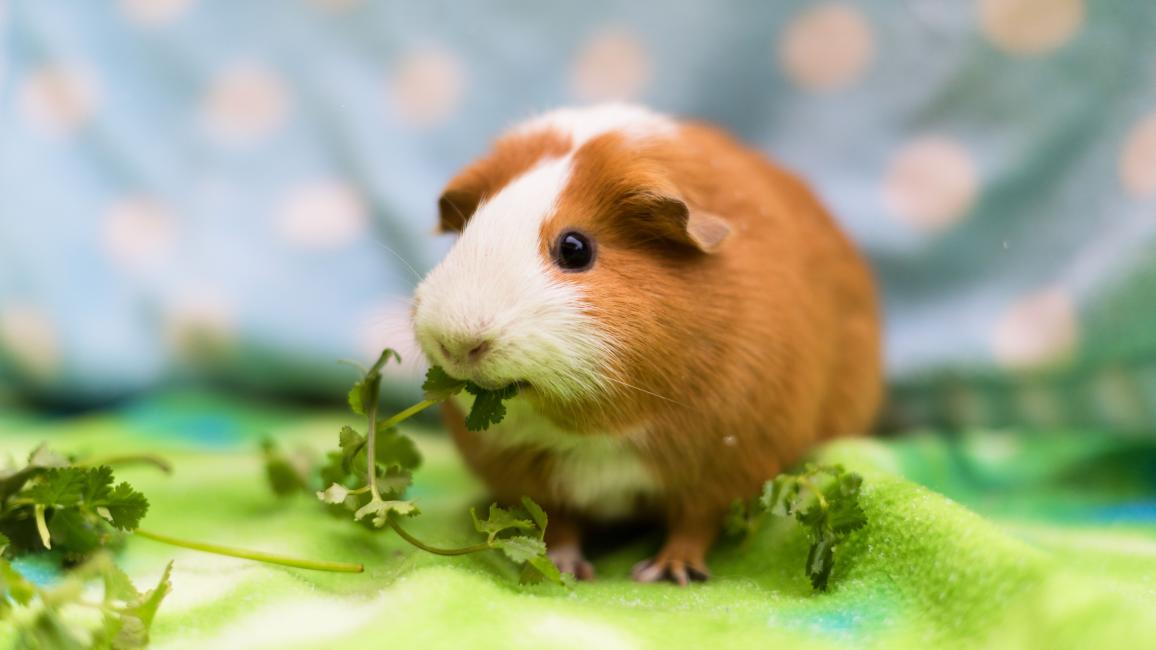
Guinea pigs are piggy — sorry, pretty — great. These compact cuties have been with us for thousands of years, first domesticated around 5000 B.C., though their rise to popular pet happened in the 16th century. And for good reason: Guinea pigs are absolutely adorable. They can be extremely sociable, cuddly companions with rich personalities and quick minds just as capable of learning tricks as dogs and cats.
And just like cats and dogs, there are guinea pigs here at Best Friends Animal Sanctuary, as well as shelters and rescue groups across the country, who need new homes. So if you’ve been thinking about adding a guinea pig to your family, now is the perfect chance to find out a bit more about them. (Just check out that bonus fact at the end!)
1. Big babies
Let’s start the way we all do: at the beginning. We’re talking baby guinea pigs. Did you know guinea pigs are precocial? That means they’re basically mini adults from the second they come into the world — fully furred, with their eyes and ears open, able to run and jump within just a few minutes to an hour. They’ll even start nibbling solid food within just a few days, though they still need mom to nurse from.
They can also start having their own babies as young as a month old, so it’s important to keep females and males separated and get them neutered as soon as possible.
2. Chew toys for tooth joys
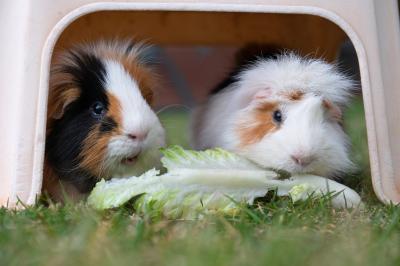
Guinea pig teeth, like those of other rodents, never stop growing. Ever. And that has the potential to cause some major problems if they’re not cared for properly. If their teeth get too long, they can have trouble eating or even hurt themselves.
So it’s important for guinea pigs to have plenty of chew toys to gnaw on to keep their teeth trim. A constant supply of hay is also important, not just for their teeth but to keep their bellies full and working properly. Veterinarians can also help file guinea pigs’ teeth.
3. Light sleepers
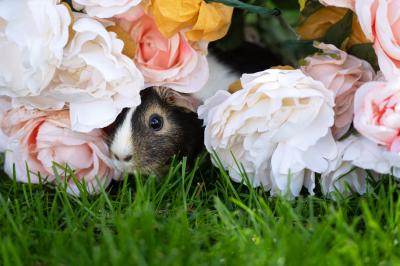
Unlike our feline friends, who spend most of their day snoozing, guinea pigs are constantly on the go. They get their sleep during quick power naps, totaling just four to six hours each day. And even then, you might not be able to tell. Because guinea pigs are small prey animals in the wild, they have to be alert even when resting — and they haven’t given that up just because they’re safe and sound at home.
Guinea pigs often sleep with their eyes open and one half of their brain still active, so they can get up and go if they need to. If your piggy pal closes his eyes and flops onto his side for a snooze, that means he really, really trusts you.
4. Gregarious guinea pigs
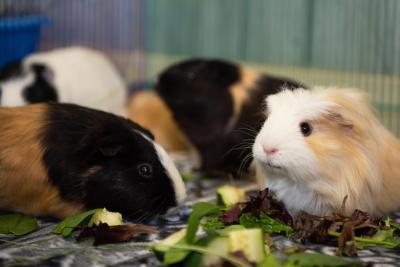
Speaking of small animals feeling safe, guinea pigs are highly social and do best in pairs or groups. As much as they may adore snuggling with their people, we’re not the best conversationalists — we don’t even speak their language. And guinea pigs love to talk, talk, talk.
They wheek and whine, chirp and chatter, and even purr to communicate all sorts of things to their herd mates. They play and groom each other, forming strong bonds with their friends, and they can become very depressed without them. Some countries even have welfare laws ensuring that guinea pigs cannot be kept alone.
5. Popcorn piggies
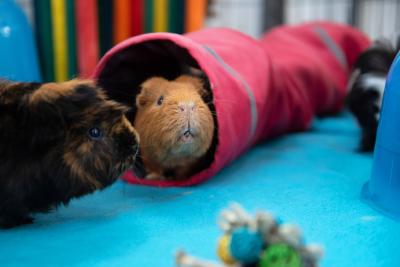
Have you ever been so happy you leapt for joy? It’s a common phrase, but most people don’t pop up into the air when they’re in a good mood. Guinea pigs, on the other hand, most certainly do. When they’re feeling especially playful, and they’re in full-on zoomie mode, guinea pigs turn into little acrobats, throwing themselves up into quick twists and wiggles before lightly landing to start all over again.
The name for these perky pirouettes? Popcorning. How cute is that?
6. AB(C)s of a healthy diet
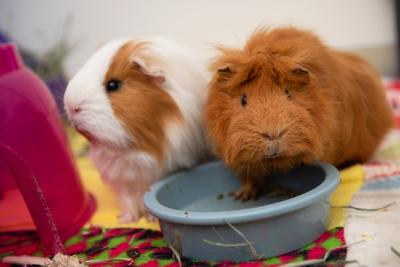
A good guinea pig diet includes constant access to hay (for their teeth and digestion) and plenty of leafy greens and veggies. They’re herbivores, after all, and salads are their smorgasbord. But it’s important to make sure you provide your furry friend with veggies high in vitamin C. Just like humans, they can’t produce their own, so these piggies, like pirates of old, are prone to scurvy without the right foods.
Things like bell peppers, tomatoes (just the fruit, not the greens), kale, and spinach are great options. There are also vitamin C supplements for guinea pigs.
7. Tidy training
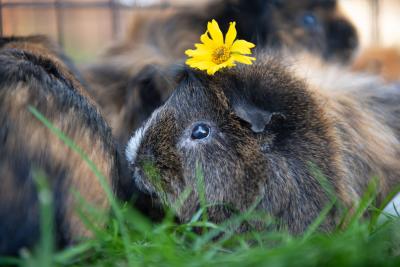
Most animals like to keep their living spaces nice and tidy, and guinea pigs are no exception. They often pick one area of their enclosure to be their bathroom on their own, so litter box training isn’t a big stretch. By setting up a litter box in the spot they’ve already picked and rewarding them for getting it right (just like you would when house-training a puppy), these clever cavies will work out what you’re asking for.
Bonus: Freebies
We promised a freebie along with those facts, and we really meant it: For the month of May, all guinea pigs at Best Friends (and a few other “Small and Furry” friends) have waived adoption fees. So if you’re looking for a new furry family member (or two), why not say hello to our little friends?
Give a guinea pig or other pet a family
Whether it’s providing a temporary foster home or adopting them, you can help pets feel safe and comfortable.
Read more
Welcome to Bunny House at Best Friends Animal Sanctuary